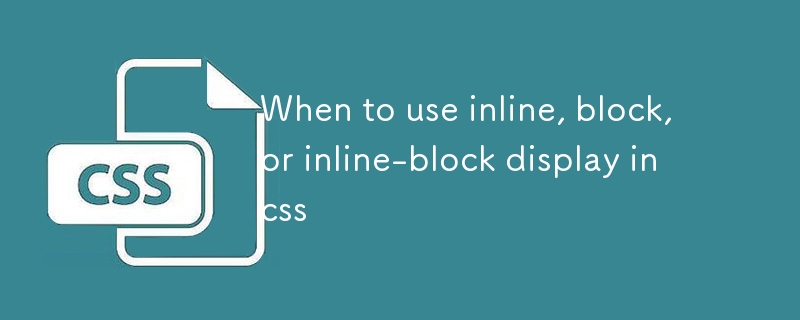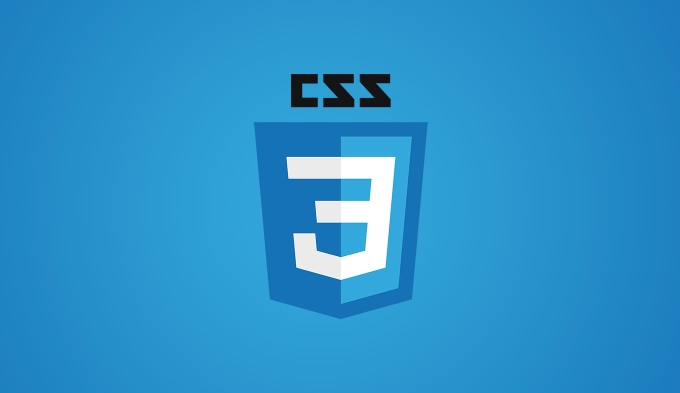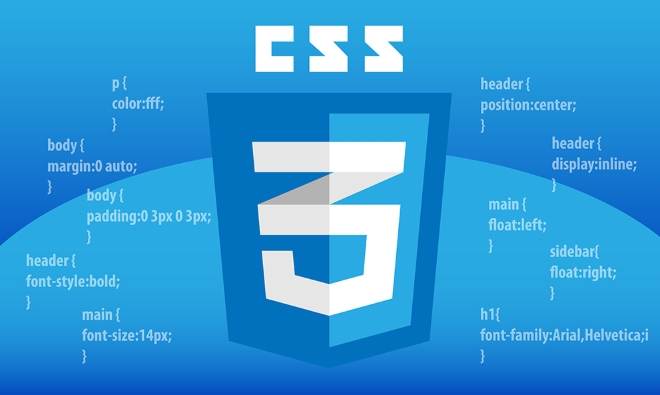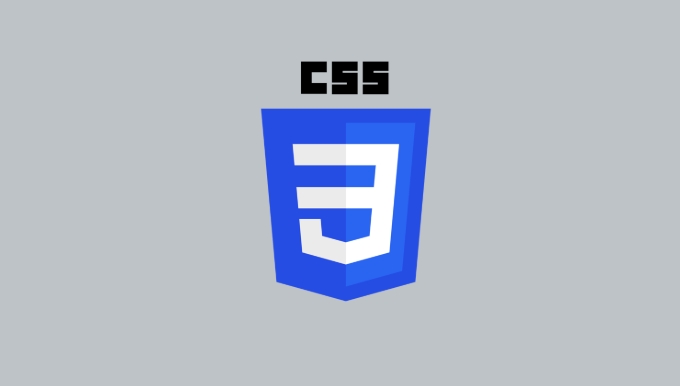When to use inline, block, or inline-block display in css
Jul 06, 2025 am 12:28 AM <p> In CSS, choosing
<p> In CSS, choosing inline , block , or inline-block mainly depends on how you want the elements to be arranged and affect the layout. They each behave differently and are suitable for different scenarios.

Use inline : When you just want it to "integrate into the text stream"
<p> inline is one of the default display methods, suitable for elements that do not need to interrupt text streams. For example, <span></span> is a typical inline element.

-
<li> It won't take a single line
<li> The width/height setting is invalid (width/height does not work)
<li> The inner margin and outer margin are only effective in the left and right directions, and the upper and lower sides do not affect the row height.
-
<li> Small segment style changes in text
<li> When the icon is embedded in the text
<li> If you don't want to destroy the current paragraph structure, you will bold, change color, etc.

<p>This is a paragraph of text that emphasizes content. </p><p> Here
<em> should keep inline so that it will appear naturally in the middle of the sentence without affecting the overall layout. Use block : When you want to form blocks independently, support the width
<p> Elements of block type will automatically occupy a whole row and can set width and height. Common block elements include <div> , <p> , <h1> , etc.- <li> Automatically wrap the line, disconnect the front and back<li> You can set width, height, margin, padding<li> The default width is 100% of the parent container
- <li> Each independent block, such as navigation bar items, card components<li> Content area that needs to be controlled for height or width<li> Clear the basic units for floating or layout
<ul> <li><a href="#">Home</a></li> <li><a href="#">About Us</a></li> </ul><p> Set
display: block for each <li> , so that they can be arranged vertically, and the click area is easier to control. Use inline-block : Want the control of flexible blocks inline
<p> inline-block is a compromise between the two. It will not force line wrapping, but can also set width, height, inner margin, etc.- <li> Not exclusive to one line<li> Support width, height and padding/margin<li> There may be spaces between multiple inline-block elements (caused by newlines or spaces in HTML)
- <li> A set of buttons or links arranged horizontally<li> Align form controls and labels<li> Icon text combination, need to fine-tune the spacing
<span class="btn">Button 1</span><span class="btn">Button 2</span><p> And with
display: inline-block set, the browser may leave a blank gap between the two buttons. Solutions include:
-
<li> Write HTML tags together without spaces
<li> Set
font-size: 0 for the parent container, and then restore the font size of the child elements separately
<li> Adjust with negative margin
<p> Basically that's it. By understanding the characteristics of each display type, you can make appropriate choices based on actual layout needs.
The above is the detailed content of When to use inline, block, or inline-block display in css. For more information, please follow other related articles on the PHP Chinese website!

Hot AI Tools

Undress AI Tool
Undress images for free

Undresser.AI Undress
AI-powered app for creating realistic nude photos

AI Clothes Remover
Online AI tool for removing clothes from photos.

Clothoff.io
AI clothes remover

Video Face Swap
Swap faces in any video effortlessly with our completely free AI face swap tool!

Hot Article

Hot Tools

Notepad++7.3.1
Easy-to-use and free code editor

SublimeText3 Chinese version
Chinese version, very easy to use

Zend Studio 13.0.1
Powerful PHP integrated development environment

Dreamweaver CS6
Visual web development tools

SublimeText3 Mac version
God-level code editing software (SublimeText3)

Hot Topics
 How can I include CSS only on some pages?
Jun 11, 2025 am 12:01 AM
How can I include CSS only on some pages?
Jun 11, 2025 am 12:01 AM
There are three ways to selectively include CSS on a specific page: 1. Inline CSS, suitable for pages that are not frequently accessed or require unique styles; 2. Load external CSS files using JavaScript conditions, suitable for situations where flexibility is required; 3. Containment on the server side, suitable for scenarios using server-side languages. This approach can optimize website performance and maintainability, but requires balance of modularity and performance.
 Flexbox vs Grid: Understanding the Key Differences in CSS Layout
Jun 10, 2025 am 12:03 AM
Flexbox vs Grid: Understanding the Key Differences in CSS Layout
Jun 10, 2025 am 12:03 AM
Flexboxisidealforone-dimensionallayouts,whileGridsuitstwo-dimensional,complexlayouts.UseFlexboxforaligningitemsinasingleaxisandGridforprecisecontroloverrowsandcolumnsinintricatedesigns.
 Creating an Auto-Closing Notification With an HTML Popover
Jun 10, 2025 am 09:45 AM
Creating an Auto-Closing Notification With an HTML Popover
Jun 10, 2025 am 09:45 AM
The HTML popover attribute transforms elements into top-layer elements that can be opened and closed with a button or JavaScript. Popovers can be dismissed a number of ways, but there is no option to auto-close them. Preethi has a technique you can u
 What is 'render-blocking CSS'?
Jun 24, 2025 am 12:42 AM
What is 'render-blocking CSS'?
Jun 24, 2025 am 12:42 AM
CSS blocks page rendering because browsers view inline and external CSS as key resources by default, especially with imported stylesheets, header large amounts of inline CSS, and unoptimized media query styles. 1. Extract critical CSS and embed it into HTML; 2. Delay loading non-critical CSS through JavaScript; 3. Use media attributes to optimize loading such as print styles; 4. Compress and merge CSS to reduce requests. It is recommended to use tools to extract key CSS, combine rel="preload" asynchronous loading, and use media delayed loading reasonably to avoid excessive splitting and complex script control.
 How to use Lotties in Figma
Jun 14, 2025 am 10:17 AM
How to use Lotties in Figma
Jun 14, 2025 am 10:17 AM
In the following tutorial, I will show you how to create Lottie animations in Figma. We'll use two colorful designs to exmplify how you can animate in Figma, and then I'll show you how to go from Figma to Lottie animations. All you need is a free Fig
 Breaking Boundaries: Building a Tangram Puzzle With (S)CSS
Jun 13, 2025 am 11:33 AM
Breaking Boundaries: Building a Tangram Puzzle With (S)CSS
Jun 13, 2025 am 11:33 AM
We put it to the test and it turns out Sass can replace JavaScript, at least when it comes to low-level logic and puzzle behavior. With nothing but maps, mixins, functions, and a whole lot of math, we managed to bring our Tangram puzzle to life, no J
 External vs. Internal CSS: What's the Best Approach?
Jun 20, 2025 am 12:45 AM
External vs. Internal CSS: What's the Best Approach?
Jun 20, 2025 am 12:45 AM
ThebestapproachforCSSdependsontheproject'sspecificneeds.Forlargerprojects,externalCSSisbetterduetomaintainabilityandreusability;forsmallerprojectsorsingle-pageapplications,internalCSSmightbemoresuitable.It'scrucialtobalanceprojectsize,performanceneed
 Does my CSS must be on lower case?
Jun 19, 2025 am 12:29 AM
Does my CSS must be on lower case?
Jun 19, 2025 am 12:29 AM
No,CSSdoesnothavetobeinlowercase.However,usinglowercaseisrecommendedfor:1)Consistencyandreadability,2)Avoidingerrorsinrelatedtechnologies,3)Potentialperformancebenefits,and4)Improvedcollaborationwithinteams.






